June 4, 2019
Last December, in the post “Top 28 Books I Read In 2018 (& How I Read A Book A Day),” I filled you in on a recent study by Pew Research in which it was revealed that Americans are actually still reading more than what you'd think, but they’re just doing it in different ways than the traditional hardcover or paperback format.
According to the research, Americans read a mean average of 12 books per year, and the typical (median) American has read four books in the past 12 months.
In that article, I also shared with you the details of how I read an average of a book a day, including highlighting resources such as:
- The book “How to Read a Book: The Classic Guide to Intelligent Reading.”
- Farnam Street’s comprehensive article on “How To Read A Book” here.
- Book summaries (which quickly allow me to decide if I really want to read a full book, vs. just getting the cliff-notes) by Derek Sivers and James Clear.
- The website “Optimize.me“, which has quick downloadable PDFs and MP3s of some of the world's top books, both old and new (BTW, you can use code: BEN to save 10% on a membership to Optimize, which is dirt cheap anyways).
Of course, since December I've read quite a few books, and in this post, I'm going to give you the skinny on 13 of my top reads from the past 5 months. Enjoy, and let me know in the comments section below this post what YOUR favorite books are, and any questions you have about my reading methods or reading resources!
1. Best Book On Athletic Performance, Recovery & Mindset I’ve Read In Quite Some Time
 Peak: The New Science of Athletic Performance That is Revolutionizing Sports – this new book – by my fellow C-ISSN and CSCS, Dr. Marc Bubbs – was one of my favorite reads of the year for all things sports science. A few of my big takeaways (and don’t worry, I’ll get him on the podcast too!) include:
Peak: The New Science of Athletic Performance That is Revolutionizing Sports – this new book – by my fellow C-ISSN and CSCS, Dr. Marc Bubbs – was one of my favorite reads of the year for all things sports science. A few of my big takeaways (and don’t worry, I’ll get him on the podcast too!) include:
– Endurance athletes seem to need more sleep than strength athletes, and both seriously suffer when sleep is anything less than 6 hours.
– A temperature change in your fingertips is likely the first circadian cue you get at the beginning of the day (I could totally see a potential jet lag device that warms the fingers – I’ll take the royalties for that, please.
– Aerobic training for strength athletes could assist with their immune system strength.
– Loading with probiotics for 2 weeks leading up to competition could give you an ergogenic edge.
– Elite athletes on a subpar diet show the same blood biomarkers as those with pre-diabetes and a fructosamine blood test can be one of the best ways to measure this.
– Top supplements proven to work in exercise science, with the strongest track history, are creatine, caffeine, nitrate precursors (e.g. beet), whey protein, beta-alanine, and sodium bicarbonate.
– Athletes with the CC genotype of the CYP1A2 gene are actually hampered in performance in response to caffeine intake.
– Eating carbs too far from a performance event (e.g. 60-75 minutes) results in hypoglycemia before the event vs. consuming them closer to the event (e.g. 20-45 minutes).
– Fish oil can stimulate muscle building by stimulating mTOR pathways. Vitamin D and creatine are also very good for recovery, not just performance. Creatine can even be helpful for TBI/concussions.
– High sugar intake is associated with lower heart rate variability (HRV).
– Cold water immersion (CWI) beats cryotherapy for recovery, hands down.
Anyways, there’s plenty more! You can get this brand new book here.
2. Book That’s Inspiring Me To Make More Sh*t With My Hands
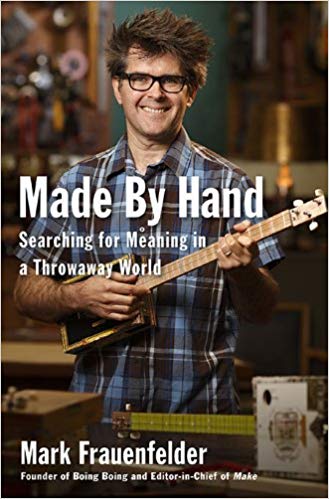 Made by Hand: Searching for Meaning in a Throwaway World: I’m pretty dang handy at things like writing, music, and art, but haven’t ever really been much of a craftsman (e.g. repairing my own car, building furniture, carving/woodwork, etc.). Lately, among other things, I’ve been wanting to convert my diesel truck to vegetable oil, build a tree fort with my kids, and help my wife finish her garage “Glamper” project and gardening.
Made by Hand: Searching for Meaning in a Throwaway World: I’m pretty dang handy at things like writing, music, and art, but haven’t ever really been much of a craftsman (e.g. repairing my own car, building furniture, carving/woodwork, etc.). Lately, among other things, I’ve been wanting to convert my diesel truck to vegetable oil, build a tree fort with my kids, and help my wife finish her garage “Glamper” project and gardening.
The book “Made by Hand: Searching for Meaning in a Throwaway World” has been incredibly inspirational for me. Author Mark Frauenfelder teaches us how to meet our basic human desire to invent and improve, long suppressed by the availability of cheap, mass-produced products that have drowned us in bland convenience and cultivated our most wasteful habits. He spent a year trying a variety of offbeat projects such as keeping chickens and bees, tricking out his espresso machine, whittling wooden spoons, making guitars out of cigar boxes, and doing citizen science with his daughters in the garage.
His whole family found that DIY helped them take control of their lives, offering a path that was simple, direct, and clear. Working with their hands and minds helped them feel more engaged with the world around them. He also reveals how DIY is changing our culture for the better and profiles fascinating “alpha makers” leading various DIY movements and grills them for their best tips and insights. This is a super fun read. Get it here.
3. Book For Muscle-Building Your Spirit
 I’ve always considered it a bit odd how much of a focus we have in the fitness and health sector on brain and body optimization and how little we focus on spiritual and soul optimization. In the past three years of my life, I’ve really begun to focus on the spiritual disciplines like fasting, meditation, silence, prayer, worship and other ways to care for what I consider to be the most important component of being a happy human.
I’ve always considered it a bit odd how much of a focus we have in the fitness and health sector on brain and body optimization and how little we focus on spiritual and soul optimization. In the past three years of my life, I’ve really begun to focus on the spiritual disciplines like fasting, meditation, silence, prayer, worship and other ways to care for what I consider to be the most important component of being a happy human.
Of late, one of my favorite books to discover and apply the spiritual disciplines in a very practical and focused way is Richard Foster’s “Celebration of Discipline: The Path to Spiritual Growth.“ The book walks you through the inward disciplines of meditation, prayer, fasting, and study, the outward disciplines of simplicity, solitude, submission, and service and the corporate disciplines of confession, worship, guidance, and celebration. I can’t recommend this book highly enough if you want to add “spiritual muscle-building” to your life. Get the new 40th-anniversary edition here.
4. Amazing Overview Of Primitive Living Skills
 Author Arthur Haines is a forager, ancestral skills mentor, author, public speaker, and botanical researcher. He’s very well spoken and has tons of practical experience in foraging, wildcrafting medicine, and primitive living skills. His new book, “A New Path,” is an epic tome that delves into the contemporary life-way of humans in an attempt to reinstate our biological norms.
Author Arthur Haines is a forager, ancestral skills mentor, author, public speaker, and botanical researcher. He’s very well spoken and has tons of practical experience in foraging, wildcrafting medicine, and primitive living skills. His new book, “A New Path,” is an epic tome that delves into the contemporary life-way of humans in an attempt to reinstate our biological norms.
The book presents the forgotten species’ norms of Homo sapiens and, by combining historical observations of hunter-gatherers with modern evidence-based research, tackles the mythology of improving life through technology and provides guidance on many important aspects of human health, including diet, water, medicine, awareness, nature immersion, movement, hormesis, community, and ancestral technologies. It’s a very enlightening read and a valuable addition to my library. You can get it on Amazon here.
5. Book That Is Inspiring Me As A Father & Husband
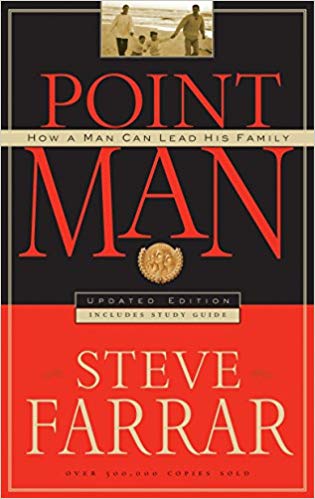 Point Man: How A Man Can Lead His Family – A big thanks to my friend James Quandahl, who manages my Christian Gratitude Journal project for recommending this book to me. “Point Man” encourages and equips men to lead their families successfully through hazards and ambushes like divorce, promiscuity, suicide, and drug addiction.
Point Man: How A Man Can Lead His Family – A big thanks to my friend James Quandahl, who manages my Christian Gratitude Journal project for recommending this book to me. “Point Man” encourages and equips men to lead their families successfully through hazards and ambushes like divorce, promiscuity, suicide, and drug addiction.
I’m getting tons of practical insight on topics such as a father’s influence, maintaining purity and husband-and-wife teamwork. It’s extremely inspiring for any man who wants to live for their family, build a legacy, and be a true leader. This is a good one for your spiritual discipline war chest. Get it here.
6. Excellent Molecular Gastronomy Cookbook
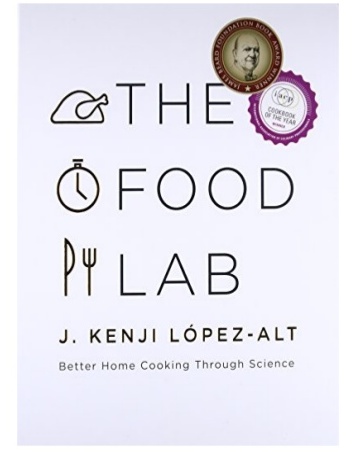 The Food Lab: Better Home Cooking Through Science: This book was winner of the James Beard Award for General Cooking and the IACP Cookbook of the Year Award and described by the New York Times Book Review as “The one book you must have, no matter what you’re planning to cook or where your skill level falls.”
The Food Lab: Better Home Cooking Through Science: This book was winner of the James Beard Award for General Cooking and the IACP Cookbook of the Year Award and described by the New York Times Book Review as “The one book you must have, no matter what you’re planning to cook or where your skill level falls.”
Ever wondered how to pan-fry a steak with a charred crust and an interior that's perfectly medium-rare from edge to edge when you cut into it? How to make homemade mac ‘n' cheese that is as satisfyingly gooey and velvety-smooth as the blue box stuff, but far tastier? How to roast a succulent, moist turkey (forget about brining!)―and use a foolproof method that works every time? Author J. Kenji López-Alt has pondered all these questions and more.
In The Food Lab, Kenji focuses on the science behind beloved American dishes, delving into the interactions between heat, energy, and molecules that create great food. Kenji shows that conventional methods often don’t work that well and home cooks can achieve far better results using new―but simple―techniques.
In hundreds of easy-to-make recipes, you will find out how to make a foolproof Hollandaise sauce in just two minutes, how to transform one simple tomato sauce into a half dozen dishes, and much more. It's blowing the mind of my little food podcasting twin boys, and I'm digging it, too. You can grab the cookbook (along with its 1000+ color photographs here).
7. Great Book For Fixing Knee Pain
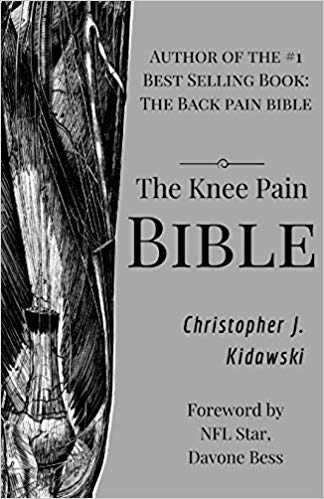 The Knee Pain Bible: On a recent trip to Vancouver, I had a sudden jolt of pain on the front of my knee while descending the airport stairs with two heavy bags. Once I got to my gate, I pulled out my little massage ball I travel with, mashed my adductors (not my knee!) for two minutes, and voila. Pain gone. I learned this trick from the handy little book: The Knee Pain Bible.
The Knee Pain Bible: On a recent trip to Vancouver, I had a sudden jolt of pain on the front of my knee while descending the airport stairs with two heavy bags. Once I got to my gate, I pulled out my little massage ball I travel with, mashed my adductors (not my knee!) for two minutes, and voila. Pain gone. I learned this trick from the handy little book: The Knee Pain Bible.
In this book, you’ll learn:
– Where your knee pain is actually coming from and how to get rid of it.
– What IT band syndrome is and how to release the muscles causing the irritation.
– How to fix runner’s knee and jumper’s knee as easy as 1, 2, 3.
– The difference between trigger points and adhesions, how they are creating your knee pain, and how to get rid of them.
– Why your specific knee pain diagnosis is not a death sentence.
And so much more! For 16 years, the author suffered from unimaginable knee pain and has since not only healed his own but countless others. This book is well worth owning if you ever get knee pain on the front, side or back of your knee. You can grab it here.
8. Book That I’m Using To Learn How To “Unschool” My Kids
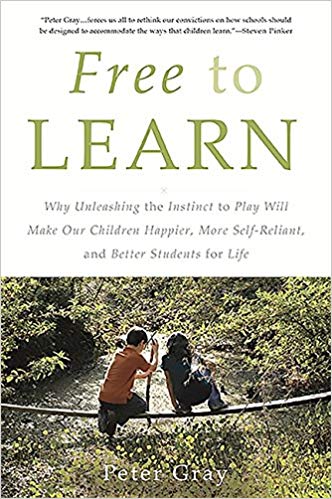 Free to Learn: Why Unleashing the Instinct to Play Will Make Our Children Happier, More Self-Reliant, and Better Students for Life: In this book, a leading expert in childhood development makes the case for why self-directed learning–“unschooling”–is the best way to get kids to learn.
Free to Learn: Why Unleashing the Instinct to Play Will Make Our Children Happier, More Self-Reliant, and Better Students for Life: In this book, a leading expert in childhood development makes the case for why self-directed learning–“unschooling”–is the best way to get kids to learn.
Developmental psychologist Peter Gray argues that in order to foster children who will thrive in today’s constantly changing world, we must entrust them to steer their own learning and development.
Drawing on evidence from anthropology, psychology, and history, he demonstrates that free play is the primary means by which children learn to control their lives, solve problems, get along with peers, and become emotionally resilient. A brave, counterintuitive proposal for freeing our children from the shackles of the curiosity-killing institution we call school, Free to Learn suggests that it’s time to stop asking what’s wrong with our children and start asking what’s wrong with the system. My twin boys are considering “dropping out” of sixth grade and simply making “life” their education, and I’m using this book as one of my key references. You can get it here (I listened to the audio version on Audible).
9. Book About Eating Like Our Ancestors That I Found Intriguing
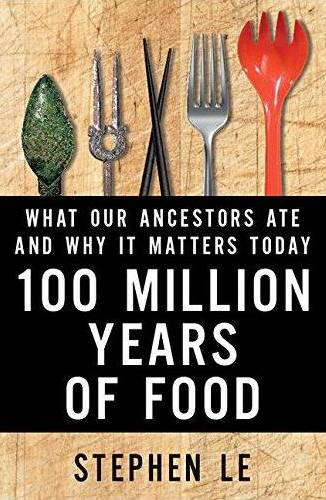 100 Million Years of Food: What Our Ancestors Ate and Why It Matters Today: A fascinating tour through the evolution of the human diet and how we can improve our health by understanding our complicated history with food.
100 Million Years of Food: What Our Ancestors Ate and Why It Matters Today: A fascinating tour through the evolution of the human diet and how we can improve our health by understanding our complicated history with food.
Traveling around the world to places as far-flung as Vietnam, Kenya, India, and the US, Stephen Le introduces us to people who are growing, cooking, and eating food using both traditional and modern methods, striving for a sustainable, healthy diet. In clear, compelling arguments based on scientific research, Le contends that our ancestral diets provide the best first line of defense in protecting our health and providing a balanced diet. Fast-food diets, as well as strict regimens like paleo or vegan, in effect, highjack our biology and ignore the complex nature of our bodies. In 100 Million Years of Food Le takes us on a guided tour of evolution, demonstrating how our diets are the result of millions of years of history and how we can return to a sustainable, healthier way of eating.
Man, oh, man…the number of highlights I have on this book about “eating like your ancestors” and “how to do it” are vast. Here are just a few of my more interesting notes:
“People around the Mediterranean learned to tame these compounds through curing and fermentation. An extraordinarily hardy tree, olives were originally cultivated for oil that was valued as a means of lighting and as a skin lubricant, especially for ceremonial purposes (whence comes the term “Messiah,” or the anointed one). Nowadays, the olive fruit is stripped of its bitter phenols and processed into various grades of edible oils with a high content of monounsaturated fatty acids, particularly oleic acid. (Phenols have excited interest for their potential role as antioxidants, but so far their health benefits remain unproven.) The richness of olive oil complements foods like cereals, vegetables, fruits, and fish, by making dull but reputedly healthy fare more palatable. Hence the explosion in popularity of the Mediterranean diet: At last, Westerners can sit down to exquisite meals again without having to feel guilty and stressing out about calories and fat. As with the phenols, there’s little evidence that olive oil itself is a healthy food. What makes olive oil valuable is that it helps to bind together an entire regional cuisine, making it possible for people to subsist on fare that is relatively low in animal products like meat and dairy yet still feel reasonably satisfied, especially when fresh, high-quality olive oil is available and when people are too poor to buy meat. Humans are hardwired to crave meat because it increases our reproductive prospects; hence, when Greece began to increase her wealth after World War II, her citizens tended to give up the olive oil blessed by nutritionists in favor of the carnal pleasures of meat and animal fat.
When Paul Sherman, a biologist at Cornell University and his then-student Jennifer Billing looked at spice usage from recipes around the world, they found that hotter countries used more spices. This makes sense since increased temperature boosts bacterial growth and encourages food spoilage, thus making the need for spices more urgent. One consequence of his theory is that it explains why tropical cuisines tend to be spicy: The lack of meat in them, especially fat, makes it necessary for cooks to drop in dollops of spices, to increase the feeling of pleasure that fat and meat would otherwise induce.
To put everything into perspective, fruits, like insects, were once an integral part of our evolutionary history and remained a valuable part of traditional diets. Even though meat provides virtually all of the nutrition necessary for survival, at certain times fruit could be crucial to human health, especially when fresh meat and its accompanying vitamin C were unavailable. For example, the Inuit living in Alaska, northern Canada, and Greenland made use of a broad variety of animal foods—seal, whale, walrus, caribou, polar bear, fox, wolf, Arctic hare, waterfowl, fish, mussel, sea urchin, and so on—but the Inuit also harvested a staggering variety of berries. These berries were critical; Inuit who lacked fresh seal meat could develop pustules when the berry crops ominously failed, as occurred in 1904–5 among the Greenland Inuit. From being a seasonal snack in traditional settings, fruits in industrialized countries have become sweet, cheap, and holy: Fruits offer urbanites, weary of the associations of meat with disease and cruelty, the opportunity to detox with spiritually unblemished food, a karmic train that inches forward with every four or five bucks forked out for a mega-sized fruit smoothie. Sadly, our ancestors jumped off the tracks leading to Fruit Heaven 16 million years ago, rendering our genes and livers unsuitable for daily jug-loads of fructose.
Professor Mintz argues that poor people around the world have historically been relegated to eating flavorless starchy foods, which were made palatable only through the addition of fringe dishes: Think of a thick swirl of spaghetti in a lake of tomato sauce; chilies kicking up corn and beans; or rice with soy sauce, fish sauce, or pickled vegetables. The elites of society, meanwhile, dispensed with the whole business of bland cores and flavorful fringes and helped themselves to meats that were furnished by the laboring masses.
Plant foods are today heralded as healthy fare, but people in traditional societies generally did not favor them, and for good reason. Consider the fate of the infamous Burke and Wills expedition, a scientific caravan that departed Melbourne in 1860 with the intent of exploring and crossing the Australian interior. The retinue boasted food sufficient for two years and sixty gallons of rum (to revive the camels)—all told, about twenty tons of supplies. However, after several months of mishaps and errors of judgment, three men—Robert O’Hara Burke, an Irish soldier and police officer; his second-in-command, William John Wills, a young English surveyor; and John King, an Irish soldier—found themselves stranded at Cooper Creek, hundreds of miles from Melbourne, with no pack animals (some of the camels had been eaten) and dwindling food supplies. Suffering from malnourishment and exhausted, the three men traded their sugar with native Aborigines for fish, beans, and the spore-like fruit of the nardoo fern. The Aborigines ground nardoo to make a paste and bread that were valuable during drought conditions, but the explorers may have neglected to roast, sluice, or winnow the spores as the Aborigines did. Doing so would have purged the nardoo of thiaminase, an enzyme that destroys vitamin B1. A person lacking vitamin B1 is debilitated by beriberi, a condition characterized by paralysis, weight loss, and loss of feeling in the extremities. Even though the men were able to consume four pounds of nardoo a day, they steadily lost strength. After weeks of wasting away, Burke and Wills died at Cooper Creek; a rescue party eventually recovered a seriously weakened King. The Burke and Wills debacle is usually portrayed as an example of cultural incompetence, since the explorers relied heavily on goods and technological might, while the Yandruwandha Aborigines were able to survive in the same area using the accumulated wisdom of their forebears. However, even the Aborigines used nardoo only as an emergency food. Consider the situation from the nardoo plants’ point of view. Like a squatter squaring off with a bulldozer, if you put down roots in a patch of soil, intending to live there for the rest of your life, you’d put up a rocking good fight the moment anyone tried to browse on your limbs, prune your flowers, pull out your roots, or nibble on your immature seeds. Making the best of their immobility, plants discourage predation with an impressive battery of defensive compounds. A raised middle finger or a portrait of Che Guevara may be the conventional symbols of defiance to many, but a plant would be just as true to the spirit of resistance. Apart from their fruits, plant parts are designed to be unpalatable through physical barriers or chemical warfare. We can group plants into six categories based on their effects when consumed:
– Enemies: plants that should never be eaten. These include assassins, plants whose toxins we deliberately employ as means of carrying out murder, torture, or punishment.
– Doppelgangers: plants that poison us because we mistake them for palatable plants.
– Sorcerers: plants that we regularly use as medicines but that harm us when we accidentally overdose on them.
– Werewolves: plants that are safe to eat at certain stages in their life cycles and dangerous at other life stages.
– Fallbacks: plants that may be eaten as a temporary resort but are not suitable for long-term consumption.
– Comrades: plants that are suitable for long-term consumption when properly prepared.
People in East Asia long disdained cow’s milk as a barbarian concoction, and only with active government and industry intervention is the drink now making inroads there. If dog milk were demonstrated to be thoroughly nutritious, how many Western shoppers would toss a carton of it into their grocery basket? People develop an innate aversion to bodily fluids from another animal because such fluids could bear a nasty infectious disease. Thanks to their prominence in Western culture and society as sources of milk, the image of cows and their milk has been sanitized, but other potentially nutritious fluids, such as horse milk and pig’s blood, strike us as unpalatable, unless we are acclimated to them from childhood.
Similar to the Yoruba, the Inuit also had a dairy-free, low-calcium diet. Inuit children consumed perhaps 20 mg of calcium per day from traditional foods. Since the Inuit are genetically adapted to low-calcium diets, Inuit children who eat a high-calcium Canadian-style diet often exhibit dangerous levels of calcium in the blood, a condition that can damage the kidneys. Conversely, in the case of pastoralists who consumed a lot of meat and especially milk, people developed genetic adaptations to deal with high loads of cholesterol from those foods. East African Maasai pastoralists became genetically adapted to a mega-cholesterol diet of cattle milk, blood, and meat, with two-thirds of their calories coming from fat alone. Their daily cholesterol intake was four to six times the average Western cholesterol consumption, but the level of cholesterol in the Maasai blood was far lower than Western levels. The genes of Maasai show evidence of modifications in regions related to cholesterol metabolism and synthesis, atherosclerosis (the thickening of arteries that is related to cholesterol deposits), and lactase persistence. All of these genetic adaptations seem to make the Maasai better suited to a milk-rich, cholesterol-heavy diet.
Apart from the question of the ideal body type for long life or good health, there’s another important consideration that influences many people: What’s the ideal body type in the eyes of those we wish to attract? A surprising and perhaps disturbing conclusion from this research is that we tend to overshoot on our estimates of what it takes to look beautiful. According to studies of American college students, men want to be more muscular and bigger than women actually prefer; conversely, women want to be smaller, shorter, and more toned and have longer hair and bigger breasts than men actually prefer. What’s going on? Why do we go through all this madness of trying to adjust our appearance if our partners are really not happy with the results? There are two possible explanations. The first possibility is that the important thing might not be the end objective; it might be more important for us to just have a strongly motivating goal in mind. If you are looking to attract a particular type of person, then having an exaggerated notion of the ideal body may be the simplest option available for achieving that goal. A second, more likely explanation was offered by three of my colleagues at UCLA, David A. Frederick, Daniel M. T. Fessler, and Martie G. Haselton. They reasoned that a runaway competition for prestige takes place whenever we think about bodily characteristics and compare ourselves to others. We try to outdo others—that’s human nature. Never mind what someone else wants; that’s a pretty tough one to figure out, as any couple can attest. Just go one better than your peers, or imitate the most popular and richest public figure you admire, and you’ll have an easy guide. Some Hollywood starlet wears fur boots and oversized shades and dyes her hair blond? Some Hollywood actor pulls off his shirt to reveal razor-cut abs? Got it. Such efforts might not be exactly what our partners want, but our minds are designed to make us compete against our peers in a silly but intrinsically human game of envy and status-seeking.”
Anyways, read this book. It’s well worth it.
10. Book That Has Gotten Me Checking Twitter Far Less
 Digital Minimalism by Cal Newport: I’ve (ironically) been digesting the audio version of this book from Audible. In this book, the bestselling author of another favorite book of mine (Deep Work) introduces a philosophy for technology use that has already improved countless lives. Digital minimalists are all around us. They’re the calm, happy people who can hold long conversations without furtive glances at their phones. They can get lost in a good book, a woodworking project, or a leisurely morning run. They can have fun with friends and family without the obsessive urge to document the experience. They stay informed about the news of the day but don’t feel overwhelmed by it. They don’t experience the “fear of missing out” because they already know which activities provide them meaning and satisfaction. Now, Newport gives us a name for this quiet movement and makes a persuasive case for its urgency in our tech-saturated world.
Digital Minimalism by Cal Newport: I’ve (ironically) been digesting the audio version of this book from Audible. In this book, the bestselling author of another favorite book of mine (Deep Work) introduces a philosophy for technology use that has already improved countless lives. Digital minimalists are all around us. They’re the calm, happy people who can hold long conversations without furtive glances at their phones. They can get lost in a good book, a woodworking project, or a leisurely morning run. They can have fun with friends and family without the obsessive urge to document the experience. They stay informed about the news of the day but don’t feel overwhelmed by it. They don’t experience the “fear of missing out” because they already know which activities provide them meaning and satisfaction. Now, Newport gives us a name for this quiet movement and makes a persuasive case for its urgency in our tech-saturated world.
Common sense tips, like turning off notifications, or occasional rituals like observing a digital sabbath, don’t go far enough in helping us take back control of our technological lives, and attempts to unplug completely are complicated by the demands of family, friends, and work. What we need instead is a thoughtful method to decide what tools to use, for what purposes, and under what conditions. Drawing on a diverse array of real-life examples, from Amish farmers to harried parents to Silicon Valley programmers, Newport identifies the common practices of digital minimalists and the ideas that underpin them. He shows how digital minimalists are rethinking their relationship to social media, rediscovering the pleasures of the offline world, and reconnecting with their inner selves through regular periods of solitude.
He then shares strategies for integrating these practices into your life, starting with a thirty-day “digital declutter” process that has already helped thousands feel less overwhelmed and more in control. Click here to read or listen to it now (but prepare to be convicted about your social media use).
11. Book About How To Use Your Brain To Control Your Biology
 Mind to Matter: The Astonishing Science of How Your Brain Creates Material Reality: This wonderful new book on healing your body with your mind contains this anecdote I highlighted:
Mind to Matter: The Astonishing Science of How Your Brain Creates Material Reality: This wonderful new book on healing your body with your mind contains this anecdote I highlighted:
“If I offered you a pill that could increase your levels of circulating stem cells, lengthen your telomeres, dissipate beta-amyloid plaques in your brain, improve your memory and attention levels, boost your serotonin, repair your DNA, regulate inflammation, boost your immune system, repair your skin, bone, cartilage, and muscle cells, power up your GH levels for cell repair, and enhance the neural connections in your brain, how much would you pay for it? Though it’s priceless, it’s all free. Eco-Meditation has been free on the Internet for over a decade. I’ve taught it to thousands of people all over the world. It’s ironic that what might be the biggest medical breakthrough of our generation is freely available to everyone, from the poorest to the richest.”
The idea that thoughts become things has become a meme in popular culture. It’s held as a firm proposition in metaphysics, and some spiritual teachers ascribe infinite powers to the mind. But are these claims scientifically accurate? What does the scientific evidence tell us about the scope of the human mind to transform thoughts into reality?
New research and new discoveries in epigenetics, neuroscience, electromagnetism, psychology, cymatics (the study of wave phenomena), public health, and quantum physics are demonstrating that thoughts can indeed be profoundly creative. In this book, author Dawson Church examines the scientific facts and reviews the studies that show, step by step, exactly how our minds create material form. As each piece of the puzzle falls into place, the science turns out to be even more astonishing than the metaphysics.
Throughout the book, Church shares illuminating case histories and up-close, authentic personal accounts of people who had an experience of turning mind into matter. Drawn from the worlds of medicine, sports, business, healing, art, and scientific discovery, these stories run the gamut from profound to inspiring to heart-wrenching. Meticulously researched evidence is presented in a highly relatable form, using engaging, understandable, nontechnical analogies. Photos and illustrations enrich the text.
Definitely worth a read. And also definitely worth downloading the free Ecomeditation .mp3 file that accompanies the book here.
12. Shocking Book About The Food In Our Country
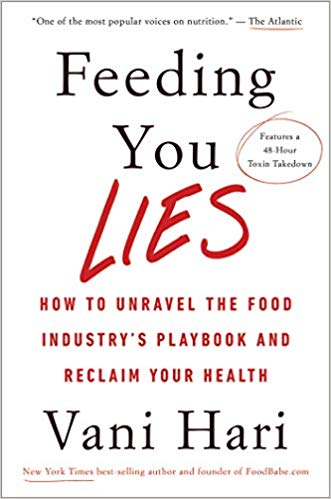 Feeding You Lies: How to Unravel the Food Industry’s Playbook and Reclaim Your Health: Author Vani Hari – AKA the “food babe”, despite being quite controversial and often accused of being a fear-monger, has really struck a chord with me in this book, particularly in her expose regarding the extreme differences between European processed and packaged food compared to that in the USA.
Feeding You Lies: How to Unravel the Food Industry’s Playbook and Reclaim Your Health: Author Vani Hari – AKA the “food babe”, despite being quite controversial and often accused of being a fear-monger, has really struck a chord with me in this book, particularly in her expose regarding the extreme differences between European processed and packaged food compared to that in the USA.
Even though the book is worth reading for that section alone, she also, in other chapters, blows the lid off the lies we’ve been fed about the food we eat – lies about its nutrient value, effects on our health, label information, and even the very science we base our food choices on. Read it, but prepare to be pissed.
13: Best Meditation Book I've Read Recently
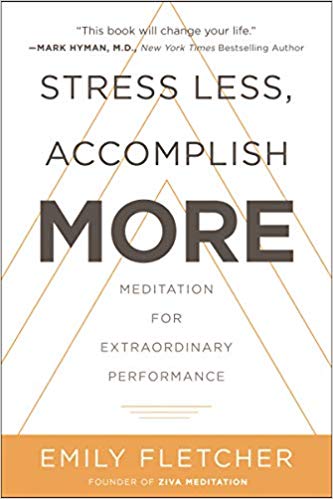 Stress Less, Accomplish More: Meditation for Extraordinary Performance is a new book sent to me by my friend Emily Fletcher, who was a former podcast guest in Meditation For Mind-Blowing Sex, Meditation For Insomnia, Meditation For Energy & Much More.
Stress Less, Accomplish More: Meditation for Extraordinary Performance is a new book sent to me by my friend Emily Fletcher, who was a former podcast guest in Meditation For Mind-Blowing Sex, Meditation For Insomnia, Meditation For Energy & Much More.
Emily specifically developed a novel meditation technique for working people with busy lives. Now, you can learn to recharge anywhere, anytime – at home or at your desk. All you need is a few minutes and a chair (no apps, incense, or finger cymbals required). But this is not just another meditation book. In it, Emily teaches a cool trifecta of Mindfulness, Meditation, and Manifesting to improve your personal and professional performance, clarity, health, and sleep. You learn how to cultivate Mindfulness through brief but powerful exercises that will help you stop wasting time stressing. Plus, you’ll get Manifesting tools to help you get crystal clear on your personal and professional goals for the future. I'm digging it (and I'm usually NOT a fan of woo-woo meditation books). Get it here.
Summary
So that's it!
How about you? What books are you reading? What are the favorite books you've read in the past few months?
Be sure to tell me in the comments section below, along with any other reading tips you have, and be sure to scroll up to the top of this article to review and grab some of my favorite resources for quickly getting the cliff notes, summaries, and audio .mp3 overviews of books I'm thinking of reading.






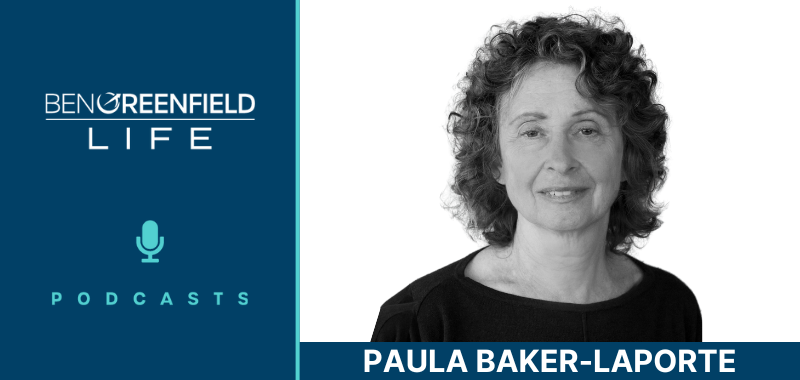


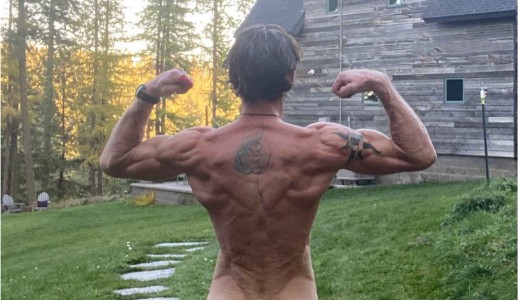




very good product Do use it once, your life will change, mine has also changed, friends, really.
https://bcfc0wzxlbp9bvchwl2oy99l8f.hop.clickbank.net
Cool
Hmm…What have I read that you might not have read? David Brooks book, “Second Mountain” is one you might enjoy. I think Hal Elrod’s “Miracle Equation” is a good one, especially chapter four on emotional invincibility. Thanks for these suggestions. I am going to read “Mind to Matter,” Stress Less and Accomplish More,” and “The Knee Pain Bible,” for sure.
Bill
You da man! Thanks for sharing your knowledge with us, I love learning about helpful, useful things!
.
I really liked the audio track that is currently in error on this page that was available. Can you advise where it came from as it made me really relaxed.
Many thanks. I love all your stuff Ben.
Nicola
As an exercise scientist myself who is constantly striving to improve mind, body, and spirit, I absolutely love your content Ben. I plan on purchasing and reading all of these books. Thank you.
Daring Greatly by Brene Brown is one of the best books I have read in the past year. Her insights (and practical tips) for becoming stronger as a whole person, while staying vulnerable and open to all of the experiences of life, are very powerful. You can have a visual introduction to her work through her TED talk (which has been viewed 41 million times). Link here:
https://www.ted.com/talks/brene_brown_on_vulnerability?language=en
Thank you Ben.
Great stuff Ben. Especially interested to try the Eco-Meditation techniques and the other meditation book. The mind is so incredibly powerful.
I ditto Susana. Ben, you’re an inspiration – not only spiritually, but physically and educationally as well. I ALWAYS glean tons of great knowledge from your recommendations and podcasts. THANK YOU!
I am reawakening to my true self as I surrender to your coaching. Since starting to use the amazing trail of life information you have gathered , I actually am feeling reborn. Thank you, your life’s work is making a difference in this
Life!🙏❤️🙏
I truly love your content and always get excited when something new pops up in my inbox. Thanks for always going the extra mile and providing so much useful content. I wish more influencers would take your lead. You Rock Ben! Looking forward to digging into these books.